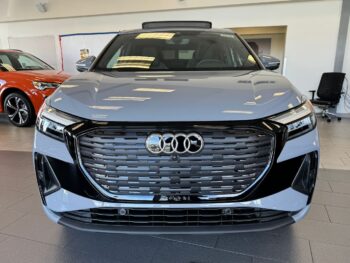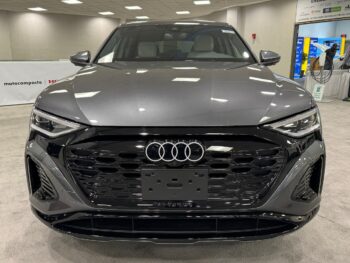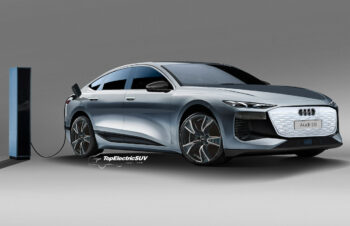Update: ‘Battery & Specifications’ and ‘Models that will use the PPE Architecture’ sections updated.
Porsche and Audi are jointly developing a new dedicated EV platform called PPE, short for ‘Premium Platform Electric.’ Project centers in Ingolstadt and Weissach are running on full steam to complete its development on time ahead of the first model launch in 2023.
Announced in early 2018
When Porsche and Audi jointly announced the co-development of the PPE platform in February 2018, they said that the project will spawn three new model families altogether. Audi is leading two of them, both of which will include models from both brands. Porsche is in charge of the third project. As you can see in the infographic below, there is plenty of component-sharing between the PPE platform models.
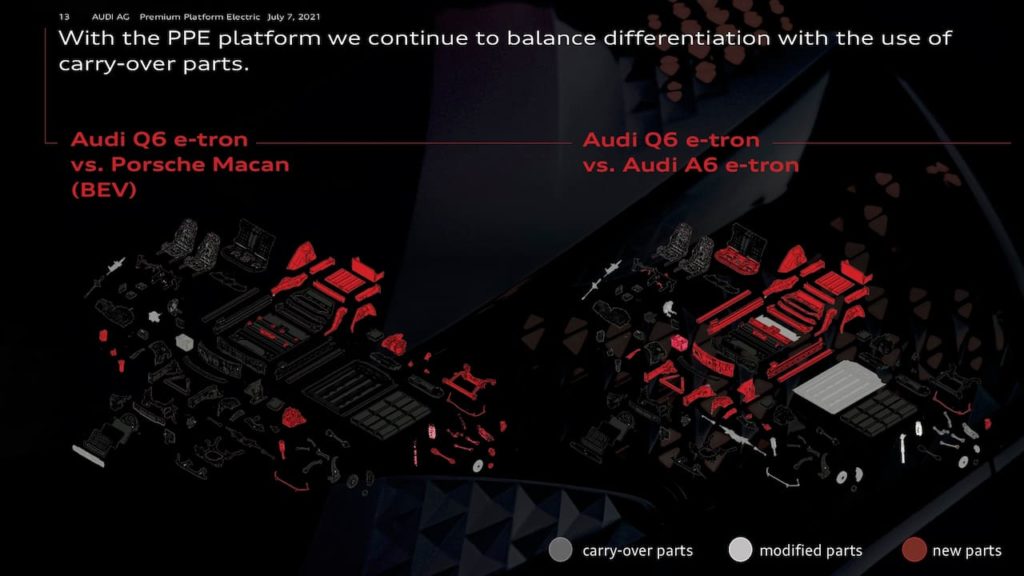
Follows the MEB & J1
The PPE platform is essentially the successor to the MLB platform, which underpins every Audi model with an internal combustion engine from the A4 through A8 and Q5 through Q8. While the MEB is for small and medium EVs, the PPE is mainly for medium and large EVs. PPE is similar to the MEB in some aspects and the J1 platform (Porsche Taycan) in a few, and it has some exclusive technical aspects of its own to be the perfect basis for the planned medium-size class and up models.
Features
The PPE platform models will be smaller than the MLB platform models but still offer a more spacious interior. Air suspension, rear-axle steering (all-wheel steering), and torque vectoring will be available in the models. The current MEB platform models don’t possess any of these capabilities, though.
Highly digital
The PPE platform-based EVs will be highly digital. CARIAD, Volkswagen Group’s software company, is developing a new software and technology platform for these cars. CARIAD’s 1.1 software stack is already on duty in Volkswagen Group’s MEB models. In 2023, its 1.2 software stack will run the electronics of the German conglomerate’s first two PPE models – Audi Q6 e-tron and Porsche Macan electric.
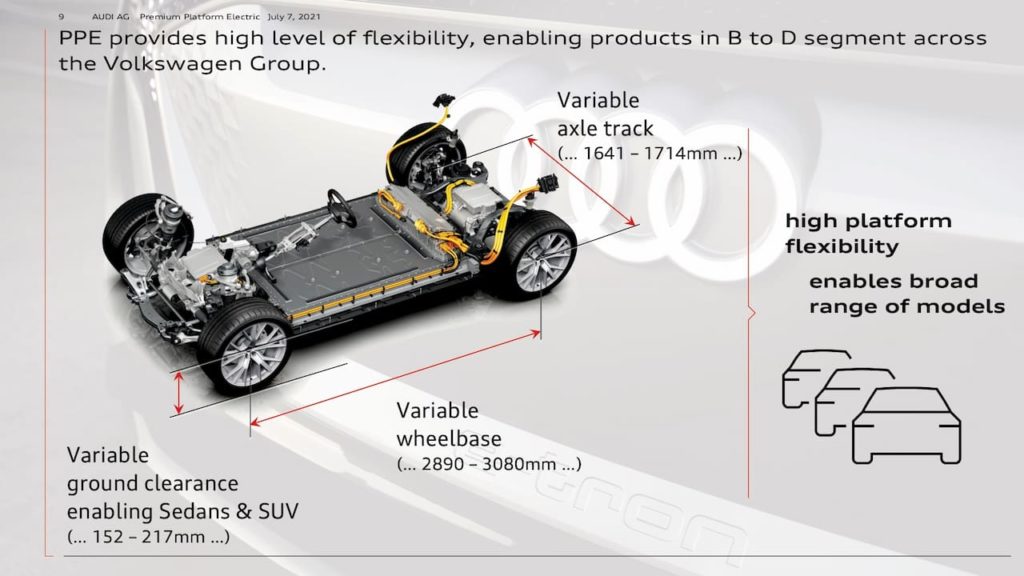
CARIAD’s 1.2 software stack will feature a new infotainment system based on Android Automotive OS – One Infotainment (also called One.Infotainment). Although having the same foundation, the infotainment systems going into different brands would provide a unique experience. “An Audi will still feel like an Audi, and a Porsche will still feel like a Porsche,” says CARIAD.
One Infotainment will include an independent app store that allows customers to use their favorite smartphone apps directly from the car. Customers will be able to continue watching their movie or listening to their podcast that they started at home, make a reservation at a nearby restaurant, and quickly find a parking space and pre-pay for it, all using the infotainment system.
Battery & Specifications
The EVs based on PPE platform will come in single-motor RWD and dual-motor AWD configurations. The dual-motor RWD models/configurations will have an additional motor, either a permanent magnet synchronous motor or an asynchronous motor, powering the front wheels. They will offer a combined power of up to 475 kW (646 PS/637 hp).
Production in Gyor, Hungary
Audi will manufacture the electric motors of the PPE platform-based EVs at its Gyor plant. The Hungarian factory started manufacturing electric motors in 2018, and these currently power the e-tron and e-tron Sportback. Audi Hungaria has started preparing for the production of the new-generation electric motors that will power the PPE models. It will redesign a 15,000 square-meter area in an existing production hall to produce these motors, and 700 employees will perform serial production there. There could be a local supplier of electric motors for the China-made PPE cars.
Supports Pouch and Prismatic cell types
The MEB platform gives the flexibility of using both pouch and prismatic cells, while the J1 platform allows using only pouch cells. The battery pack modules of the PPE platform-based models will consist of prismatic cells. Both pouch and prismatic cells are more versatile than round cells (which Audi used in the experimental R8 e-tron) and allow a more dense packaging. However, prismatic cells are more robust because they have separate aluminum housings.
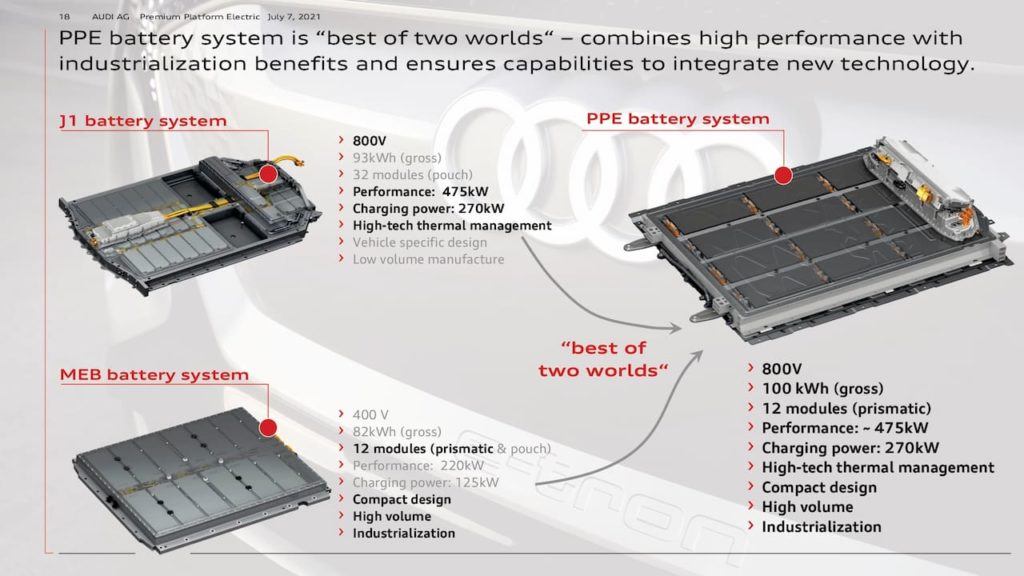
System voltage & range
The PPE platform EVs will feature large battery packs with an embedded (gross) energy content of up to 100 kWh. Porsche hasn’t talked about the maximum possible range, but Audi is targeting a range of up to more than 700 km (435 miles)*.
The state of charge will be 800 volts, and while the initial plan was to offer a high charging capacity of 350 kW, the new plan is to limit the maximum charging power to 270 kW. That’d be still fast enough, Audi indicated in the A6 e-tron concept announcement, saying that just ten minutes of charging can give a range of 300 km of range with just 10 minutes using a Level 3 DC fast charger. Charging up its 100 kWh (gross) battery pack from 5 to 80% SoC takes less than 25 minutes.
Audi’s R&D chief Oliver Hoffmann talked about the PPE platform’s capabilities at the company’s annual media conference this year. He said:
We have an extremely strong plan technology platform with 800 volt power supply, 270 kW of charge power, and ranges in WLTP of up to 700 km. A wonderful technology – extremely efficient and good looking as you saw when loose seeing the A6 Avant e-tron concept.
Oliver Hoffmann, BoM member – Technical Development, Audi (Audi Annual Media Conference 2022 on March 17, 2022)
PPE Architecture features in a nutshell
- Oil system for gears and e-motor with electric oil pump and dry sump lubrication for low friction and improved efficiency
- 800V HV system that offers fast charging capability
- Silicon carbide semiconductors for high efficiency in power electronics
- E-motor with hairpin winding and direct oil cooling for stator and rotor (high power density/reduction of rare earth)
- 22-inch wheels
- Short overhangs
- Flat cabin
- Ultra-fast-charging at up to 270 kW
- Ultra-fast-charging from 5-80% in less than 25 minutes
- Up to 475 kW of motor power
- 0-100 km/h (0-62 mph) acceleration in less than 4 seconds
- 100 kWh battery pack capacity (gross)
- Travel range of more than 700 km (435 miles)*
- 0.22 Cd value
*WLTP
Models that will use the PPE Architecture
PPE provides a high level of flexibility, enabling cars in the B- to D-segment across the Volkswagen Group. The first models riding on the PPE platform will be the Audi Q6 e-tron and the Porsche Macan EV. Sedan and wagon models like Audi A6 e-tron and Audi A6 Avant e-tron respectively are also in Audi’s roadmap. Electric sports cars and other body styles are also possible with this platform. Together, Audi and Porsche plan to sell 7 million PPE platform EVs by 2030.
The PPE is essential for our 2030 strategy. We developed this platform with Porsche for purely electric vehicles with a very clear structure and design as a pure-bred electric platform. (It has) advantages in terms of weight and also proportions, (and) it’s flexible. SUVs and low underbody sports cars from mid to luxury segment will be possible based on that platform.
Oliver Hoffmann, BoM member – Technical Development, Audi (Audi Annual Media Conference 2022 on March 17, 2022)
Featured Image Source: Audi; information in this article is compiled using data and facts presented by Audi to the media and investors.


